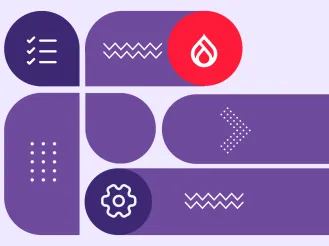Drupal 7 End-of-Life (EOL) Extended: Here’s What You Need to Know
According to Drupal's usage statistics, over 400,000 Drupal sites currently run on Drupal 7, which launched over a decade ago. That’s more than half of all working Drupal sites! Despite this large number, Drupal 7 will reach its end of life on January 2025. Support has recently been extended for the final time, from November 2023 until January 2025, easing the pressure on website owners to migrate to Drupal 9 or 10. However, website owners should not wait until the last minute to decide on the next course of action and start the migration process.
Why You Need to Migrate Now
Your website is your most important marketing asset and migrating to Drupal 9 or 10 offers an opportunity to improve website effectiveness and address customer needs. Drupal 9 introduced new features such as responsive images, cleaner code base, Symfony and Twig for improved security and performance, layout builder, workspace module, and a headless CMS. These modern features enable organizations to reassess, declutter, and update their digital presence, similar to moving into a new home. Drupal 10 is continuing to build on this with additional features improving the content editing experience.
Moreover, as the end of life deadline approaches, migration options will dwindle, and the risk of being on an unsupported version will increase. We at ImageX, along with many other digital agencies, have already seen an increased demand for migration and redesign services, with start dates for new projects occurring later and later. Website owners who plan to work with a Drupal agency should begin their vendor selection as soon as possible while highly-skilled partners are still available to complete the work in time.
Website migration is a complex process that involves various moving parts. It’s really beneficial to get outside help, especially if internal resources are not available. A skilled Drupal agency can offer project management expertise, design and digital experience expertise, best practices, and support. Working with an agency allows businesses to focus on existing work while the project stays on track and on time.
Set Your Goals
When planning your migration, there are several important things that you should consider to ensure a smooth transition and better results.
Not sure where to start? We have several recommendations. Firstly, it’s essential to update your site’s taxonomy to ensure that it’s organized in a way that helps visitors find what they need and reflects how your users are actually using your site. Next, you should refresh your site’s design and copy to ensure that it’s up-to-date and consistent with your branding. This is also an excellent opportunity to fine-tune the voice and tone of your website for consistency.
Additionally, accessibility standards should be taken into account during the migration process to ensure that you’re providing access to all of your visitors and aren’t being penalized in organic search. A content audit and SEO optimization is also necessary to determine what content should be kept, updated, or retired.
Working with a hosting platform can help your migration run more smoothly and set you up for longer-term success. Finally, putting the right workflows in place makes it much easier for marketing and development teams to collaborate and deploy changes more frequently.
Planning Your Project
Pre-project planning for the migration is crucial, as it can take several months to secure funding, find an agency, review proposals, and go through legal agreements. A website project that takes four to five months from kickoff to launch often has an additional three to four months of pre-project planning. Therefore, website owners should build a business case, write and distribute a request for proposal (RFP), evaluate and select a vendor before any actual work has begun on the migration. In our experience, a website project that takes 4-5 months from kickoff to launch, often has an additional 3 or 4 months of pre-project planning.
While the pre-project planning is in motion, you can focus on site strategy and begin to evaluate where your site is today and where you would like to take it. Not everything needs to be accomplished during the migration, but if you don’t know where you’re going, it’s really hard to get there. Take a moment to evaluate whether your current website strategy aligns with your organization's overall goals and how effectively your websites are helping your organization succeed. This step will help you identify any gaps that need to be addressed during the migration process and ensure that your website's goals align with your organization's broader mission.
Another crucial step in the migration process is conducting a content audit. Even if you're building a new site from scratch, you'll likely want to migrate some of your existing content to your new site. This means taking a close look at each page and determining what content should stay and what should go. This step helps ensure that your new site is leaner, more streamlined, and better aligned with your organization's goals.
Almost every Drupal 7 site has some form of custom code, whether it handles small overrides or multiple custom modules handling integrations and other features. The nature of this code can heavily influence the effort needed to upgrade a site to Drupal 9 or 10. In some cases, custom features can be rebuilt using new core functionality, but in those situations where it needs to be recreated using code, a code review is necessary to understand what needs to be done to upgrade it to work on the new site.
Make the Transition
The platforms through which we consume content are always evolving so in order to set yourself apart from your competitors, you need to stay current with technology. Migrating your CMS from Drupal 7 is an opportunity to improve your site with users in mind and deliver better results for them and your organization. The longer you wait to get started, the more challenging it will become to make meaningful improvements to your site, which can cost you time and money.
Finding the right agency to support your migration effort will ensure that you have the right strategy for your business. Ready to start your Drupal migration journey? We’d love to hear from you.



